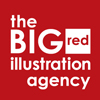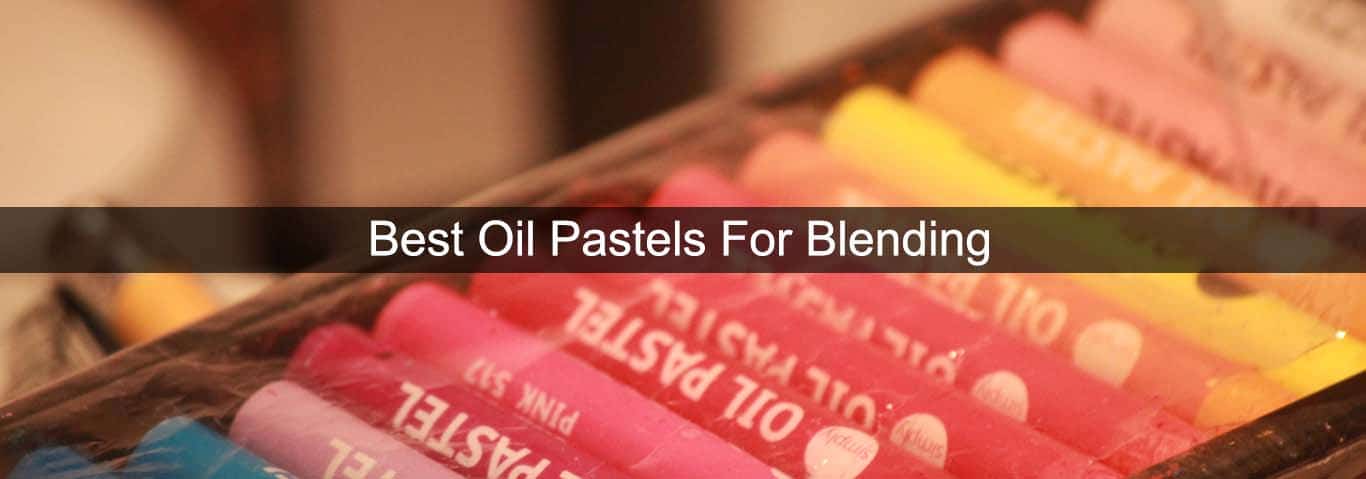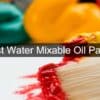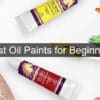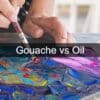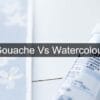Oil Pastels vs Soft Pastels
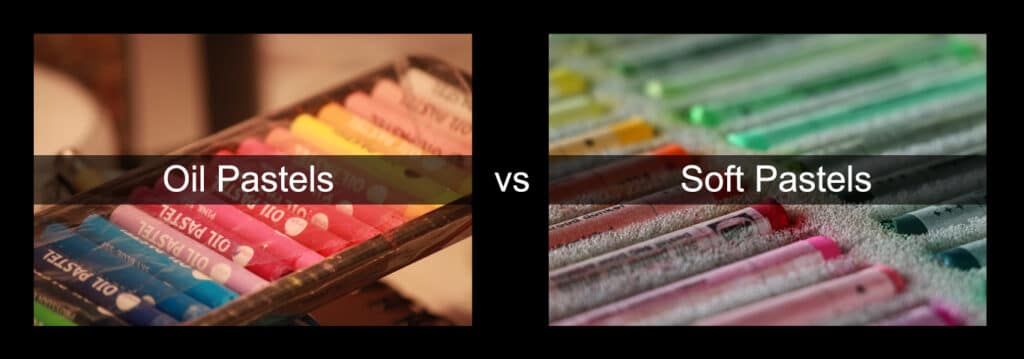
An overview of both soft and oil pastels
Pastel paints come in various types making them a very versatile and interesting medium of paint. Pastel painting enables you to be able to make both expressive and fine detailed work.
What does that entail for the artist? Well, the versatile techniques enable you to explore far more beyond your conventional techniques.
As an artist challenges and learning new things become a very integral part of your hobby or profession in keeping you on your toes and interested in your crafts.
Pastel paints as mentioned earlier come in many types and forms. This guide will reveal how soft pastels are different from oil pastels.
Soft pastel as similar as it sounds to oil pastel cannot be more different from each other.
The very nature of each stick is different from the former option, unlike soft and hard pastels.
There are several key differences between soft pastels and oil pastels. The main difference is the constituents of the paints.
Oil pastels

Oil pastels generally constitute wax, oil, and pigment in stick form. The colors remain vibrant and stuck on the surface it is applied to due to the nature of the medium. The paints can be manipulated upon application with the help of different thinners and blending tools.
Oil pastels are great for impasto effects and expressive painting due to the final results providing intense colors. The strokes are much broader upon application. Generating fine details for your art project will be a challenge.
Many artists, however, prefer this medium over this art medium due to the texture and application results. The non-drying oil in the sticks allows more modification with the right thinner. The waxy consistency is greasy to the touch but most artists are okay with getting messy and handsy with their projects when working with this medium.
The vivid colors and the intense hue can only be found in the finish of oil paint as opposed to other pastels. The medium is resistant to blending and requires you to apply multiple layers to blend colors, indicating it’s not impossible to blend just difficult.
Each stick of oil pastel is like the soft pastels are molded into rectangles and cylinders for application on different surfaces such as paper, watercolor paper canvas, and others.
Oil pastels are great for seasoned artists. This method contains just as much pigment as soft pastels if not more.
However, it boils down to personal preference whether you want to work with oil pastels or soft pastels.
Soft pastels
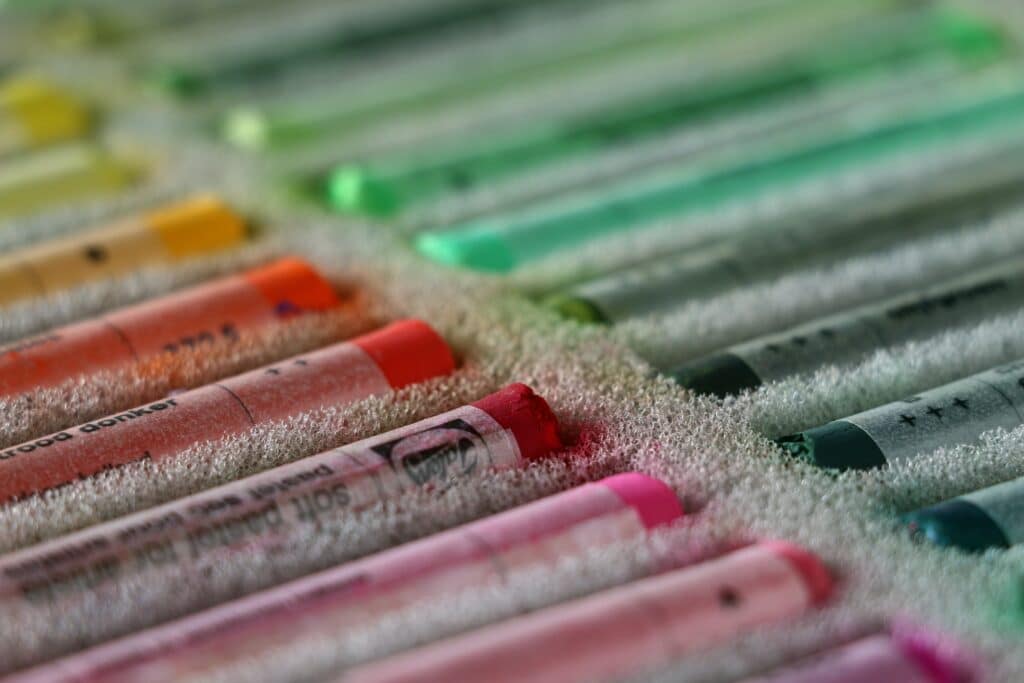
Soft pastel paint is a world apart from oil pastels. Most soft pastels are usually made up of Pigment, Chalk, Clay, and Gum Arabic to be used as a gum binder. These ingredients make the sticks have a powdery texture as opposed to a creamy texture.
The sticks have a fragile consistency due to the dry ingredient nature, hence they are called soft pastels. The pigment is not as opaque as oil pastels but can be easily blended with other pastel colors and the paints generally do not stick due to the dry pigment.
Among pastel types, this type of pastel is good for detail and preliminary sketches. There are several soft pastel techniques for artists to try and pick and choose from making them extremely versatile and great for painting.
Pastels can be painted on mixed media or watercolor paper for starters, however pastel paper will enable the user to have more control over blending and drawing in general.
Soft pastels excel when it comes to different techniques and blending so make of that what you will while you are considering soft pastels.
Soft pastels have less binder as opposed to hard pastels which makes them super easy to smudge and move around on surfaces while also maintaining the vibrancy of the painting.
Additionally, soft pastels kick up a decent amount of dust while painting so it is recommended to not inhale the dust by being in a well-ventilated area or wearing protective gear while working.
The choice that has to be made between soft pastels solely relies on what sort of art form you are going to be pursuing, through the goggles, complete beginners would want to consider soft pastels over oil pastels due to the art supplies required for each of the media.
Which Medium is more affordable?
Soft and oil pastels both have similar price points per unit stick. The prices for both these mediums can be sourced from various art material suppliers and upon comparison, you will realize there is not much of a gap between the two mediums.
Painting with oil pastels vs soft pastels should never have to boil down to your budget, rather your personal preference due to the fact of the pastel sticks being of such a close budget.
Sennelier pastels provide excellent options for you to consider for art supplies in general at a very affordable price point.
Techniques to explore
Soft Pastel Techniques
The main key difference between soft pastels vs oil pastels is that each of these media requires different techniques to master for application.
While oil pastels give a feeling similar to oil painting, soft pastels give the feel of pastel pencils with their chalky texture.
Soft pastels can be used in harmony with hard pastels with the lock-in and blending techniques. You can blend and draw expressive lines to the best of your ability and hard pastels will come in handy to lock in the strokes with the more fine lines without crumbling.
Soft pastels, either way, feel chalky whether you use hard pastels or soft, and it’s just a variation of the same medium. You are as free as using your bare hands for soft pastels indicating that they are acid-free in their components.
Coming back to the components used in soft pastels which is the most commonly used pastel. The sticks are made with a combination of white chalk, pigment, and gum arabic which gives it its matte finish.
Since soft pastels are a dry media they generally do not adhere to any surface and can be moved around once applied. Harder pastels and pastel pencils come in handy in this case for drawing. The soft pastels can be used for a shading effect and the other methods. Thus, proving the versatility of this media.
The various techniques apply for both soft and oil pastels. Pastel types are crucial to keep in mind while using them for your art.
Most artists work with both pastels and oil to keep things interesting, however, keeping track of so many things and art supplies may be difficult but that is the beauty of art.
Oil Pastel Techniques
Oil pastels can be applied to any surface, however, it does not mean that it’s completely set and unchangeable or movable, it simply just stays in place better and dries eventually, and can be thinned to modify later which is quite simple unless it is applied on paper.
The nature of oil pastels is very similar to oil paints in terms of finish, however, it is integral to never confuse oil paints to be even remotely close to pastel sticks in comparison.
As mentioned before, oil pastels are comparatively difficult to blend. Using your finger or investing in a blending stump can be a good idea if you want to blend your paints along with that just a little bit of layering and persistence is required.
Artists love the brilliance of the art with oil pastels for the brilliance and vibrancy in color. Be it on paper or canvas.
Oil pastel drawing is very expressive so drawing fine details can be out of the question unless you are among the most experienced artists.
Oil pastels require some extra equipment for you to work with, however, they’re very optional and you can easily make do without the additional equipment.
The extra equipment in question is pastel paper, solvent, blending tools, tape, and glassine, with these in your arsenal although optional will ensure you have the best time working with your pastel colors.
Like watercolor, oil pastels do require special paper to get the best out of your art. While many artists just get to work from the get-go, you may find it better to have the extra stuff up your sleeves.
Oil pastels for their incredibly vibrant colors are greatly appreciated by artists unanimously despite their lack of fine-point drawing the expressive style of painting is also quite popular. The pastels also come in oil pastel pencils which have the same consistency.
What are oil pastels best for?
Pastels vs oil is a game of preference and is not a competition. Both oil and soft pastels carry their strengths and weaknesses and give out wildly different results, expecting the same painting outcomes with these media of paints would be a far-fetch.
As mentioned earlier, oil pastels are amazing for expressive lines and paintings. The right pastel paper will do wonders for your art project experience.
Expressive paintings are a very prevalent form of art among the artist and when done right can bear incredible results.
Oil pastels are a cleaner media of paints than most and their buttery smooth texture makes them an absolute delight to work with.
What are soft pastels best for?
Soft pastels are great for blends and they contain way less gum and binding for each stick. Pastels vs oil simply boil down to what sort of painting technique you are going to adapt and work with.
Soft pastels are very similar to hard pastels and you can consider them to be in the same league but compared to oil pastels, they are monumentally different.
Soft pastels are additionally great for large sweeping colors.
Conclusion
The battle between finding your one best pastel in the world of soft pastels vs oil pastels can be quite difficult yet extremely fun. While working with multiple mediums you are free to explore many different techniques. It’s not soft pastels vs anything it’s just your preference over others.
Pastels are an amazing product to work with and are the most popular after acrylics and watercolor. Their various textures and consistencies ensure satisfaction till the very end allowing you to play and explore your desires.
While hard pastels aren’t exactly the same as soft pastels, they can be used aside each other for brilliant art pieces if done right. This is a very common occurrence in the art world where you mix and match several types of pastels for your art project.
Oil pastels, however, are completely different in terms of working with other types of paints. Although they look and feel similar to oil painting, they are absolutely nothing alike and people often mix up the two.
The preference is based upon your own opinion and nothing can sway that. I hope this comparison guide can serve as an integral step in finding what is best for your free time.
Both oil pastels and soft pastels, however, have their own caveats so you must pick wisely about what you want to work with.
Before concluding you must remember while working with soft pastels or other chalk pastels, precautionary gear is absolutely necessary if the dust kicking up is noticeable.
Keeping a respirator in your art supply will always come in handy for working with various media products.
Additionally, oil pastels also contain harmful chemicals in their composition so be wary, wear gloves and avoid working with exposed skin for too long.
Once again you will thank yourself for taking the extra step of precaution in the long run.
The final verdict from me is that as an artist you will have to work and adapt with many paints, there will be caveats of the things that I will be interested in but that will never stop me from exploring continually for the next best thing.
Both oil pastels and soft pastels have my approval for being the most rewarding painting methods to work with and I hope you find the same joy as I did working with these pastels.
Related Posts

Written By Adam Rushton
Adam has made a name for himself in the illustration industry and is a passionate blogger and writer on the subject of art, illustration and graphic design.
His artwork has been featured in countless publications and used for very well-known media projects. As a professional illustrator for over 20 years, Adams media outlets, a wealth of knowledge, and experience enable him to consult and advise artists and illustrators in this country (from York and Manchester to Southampton and London) and all over the world.
